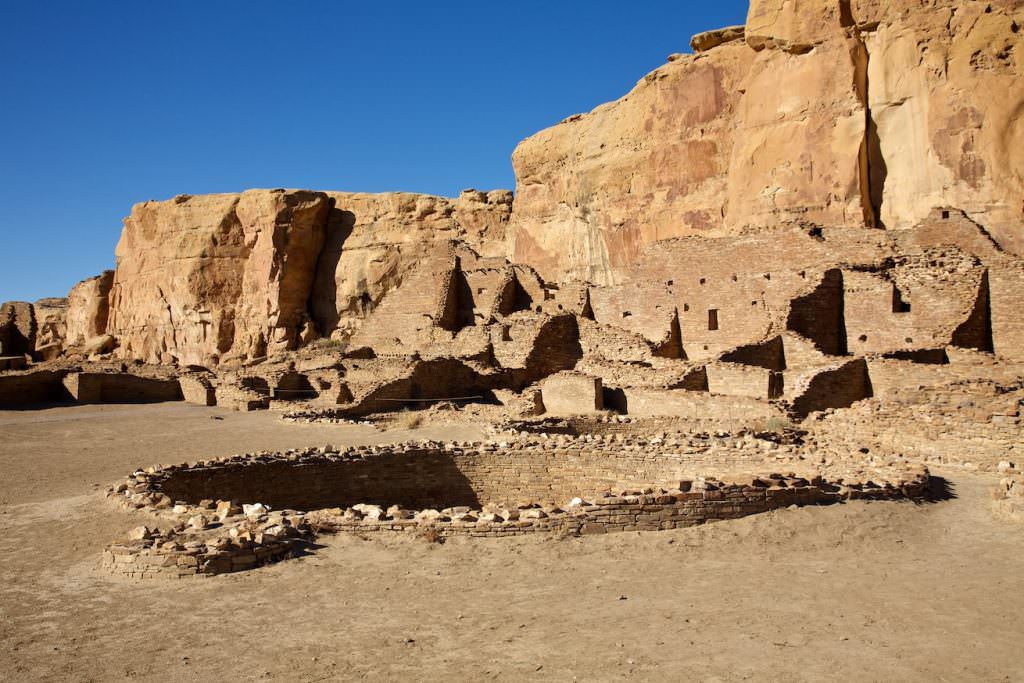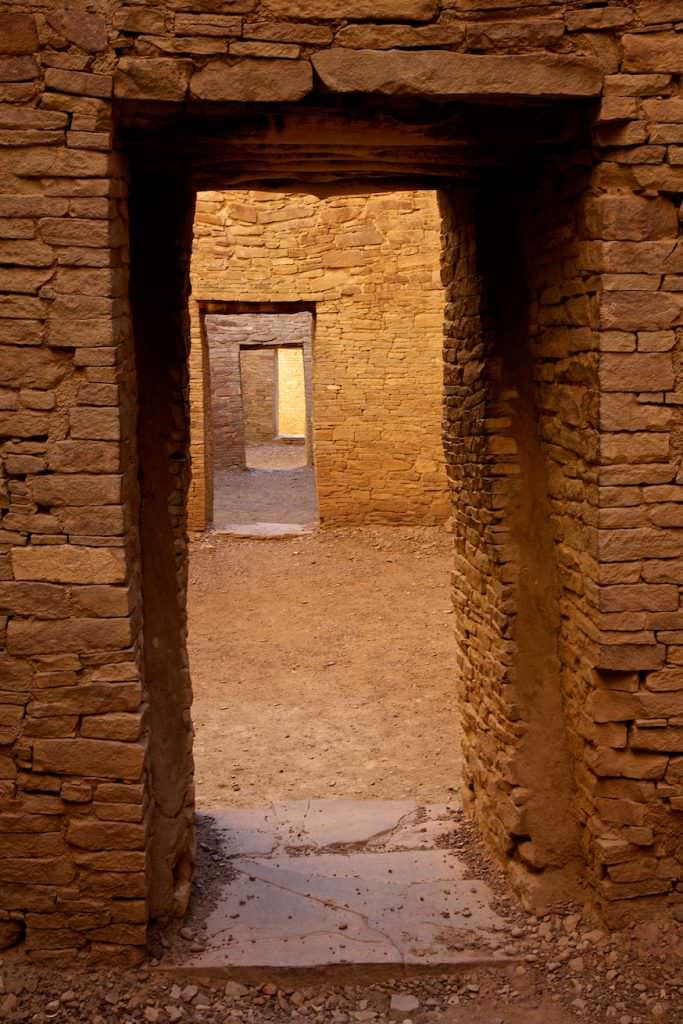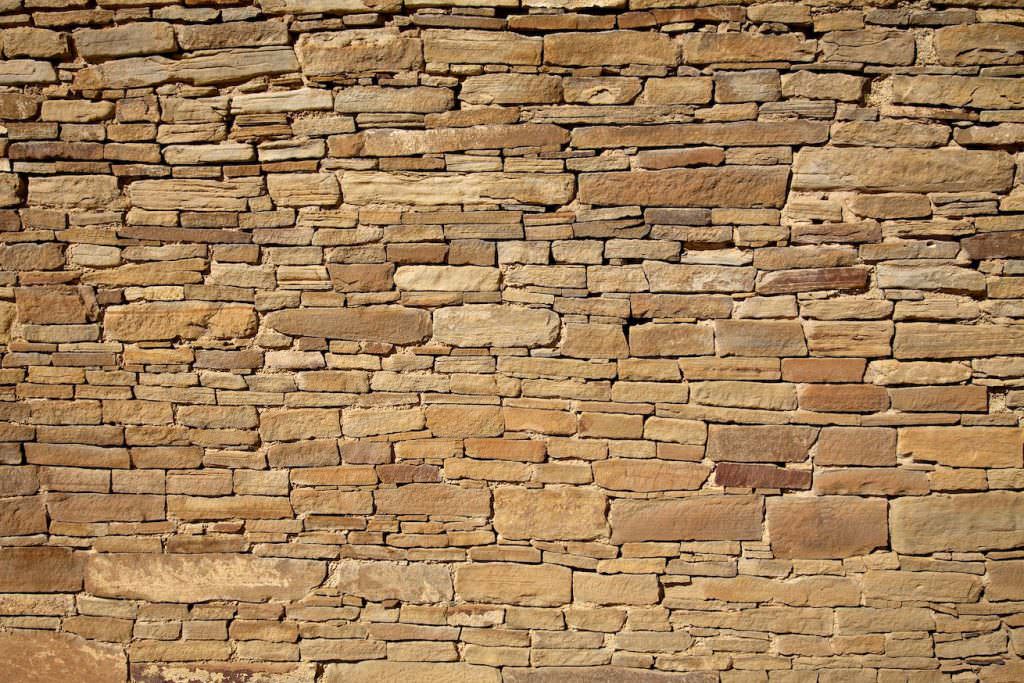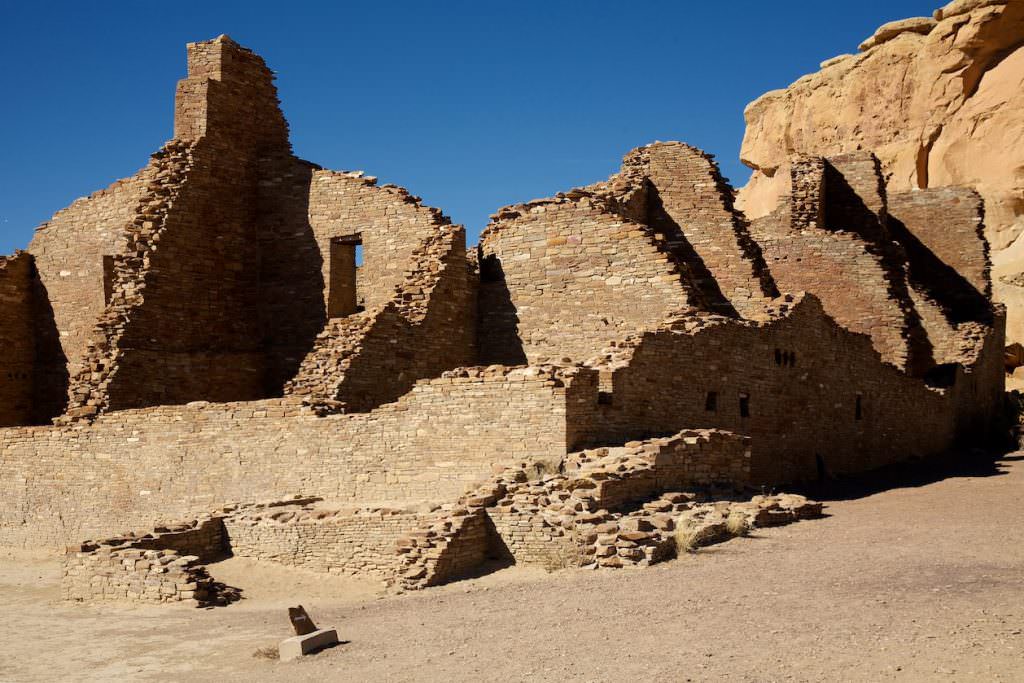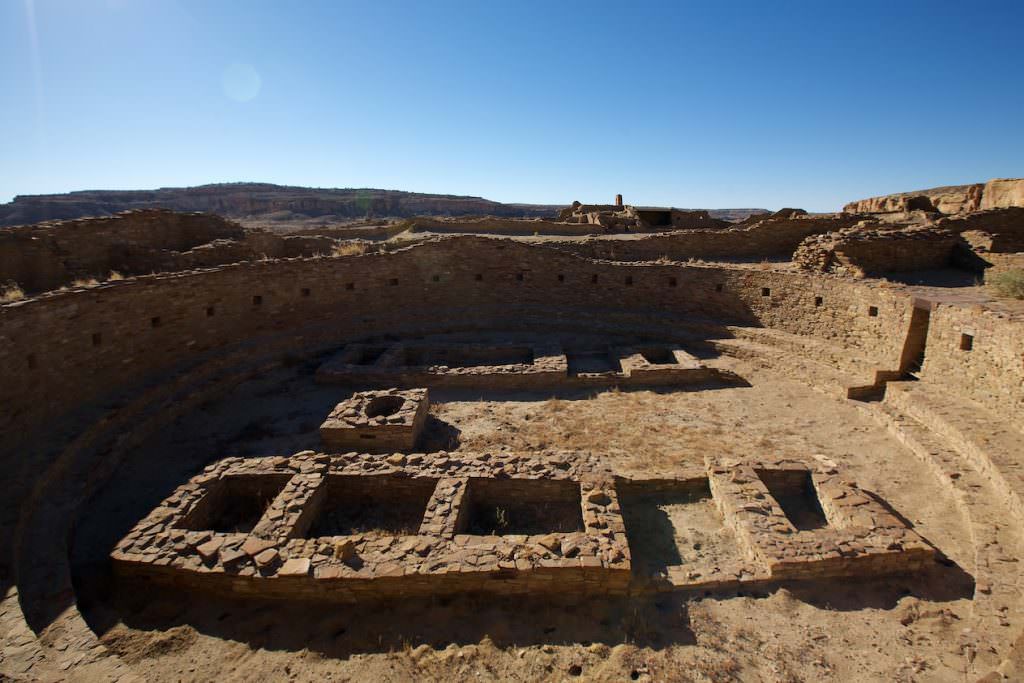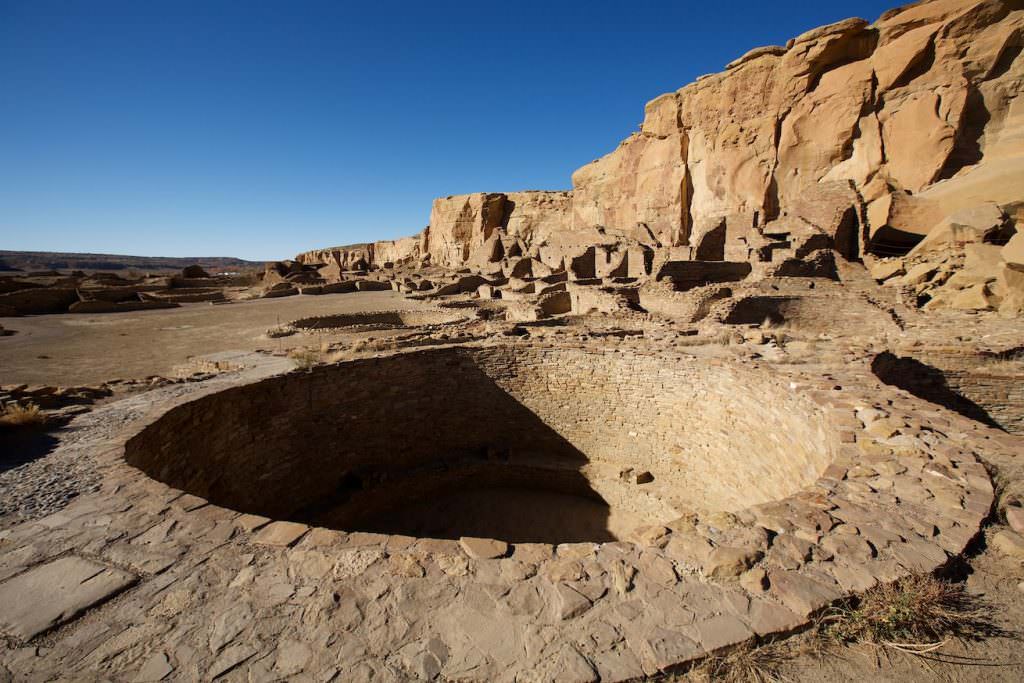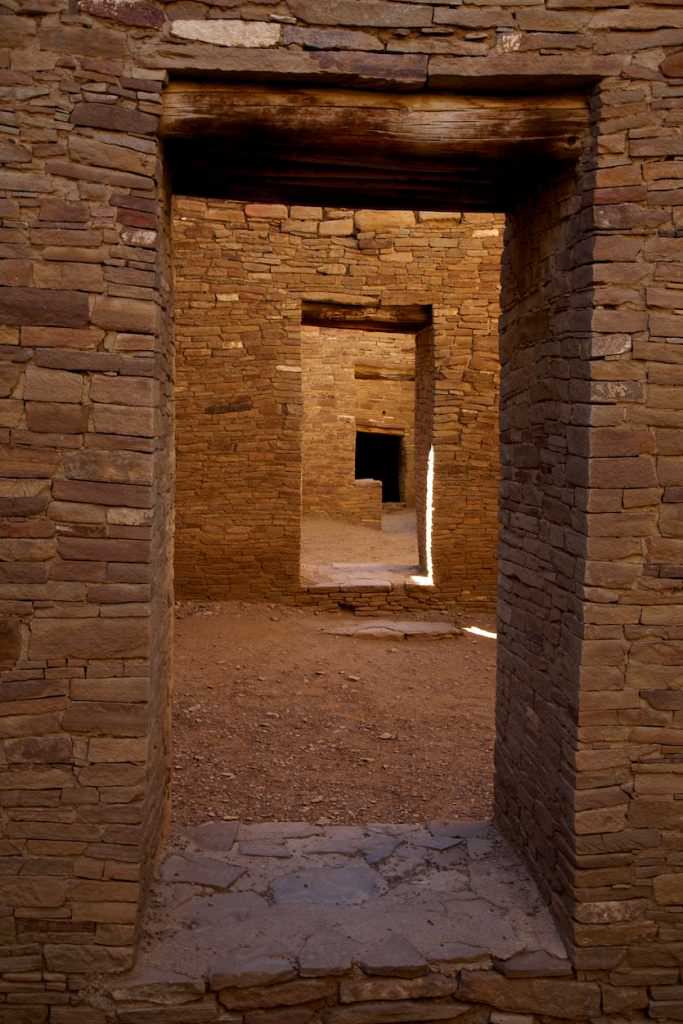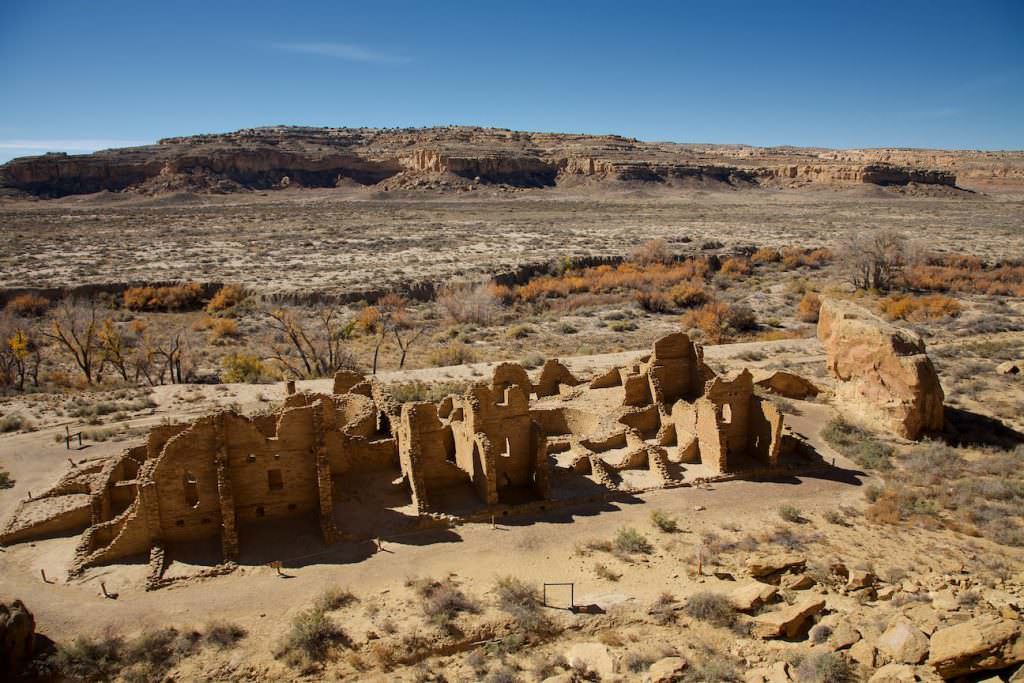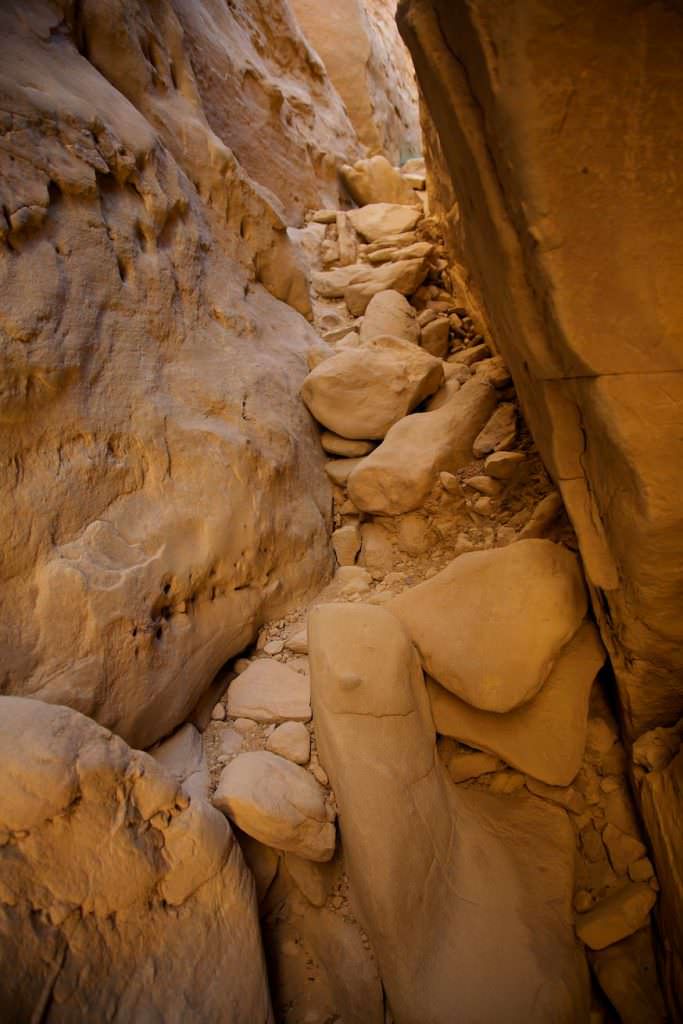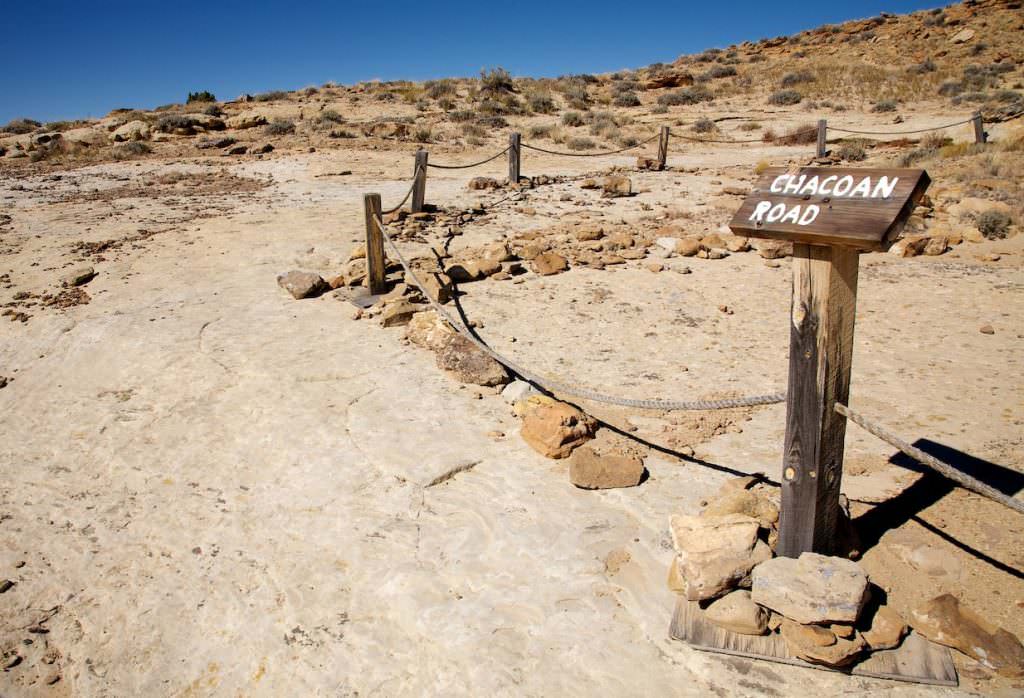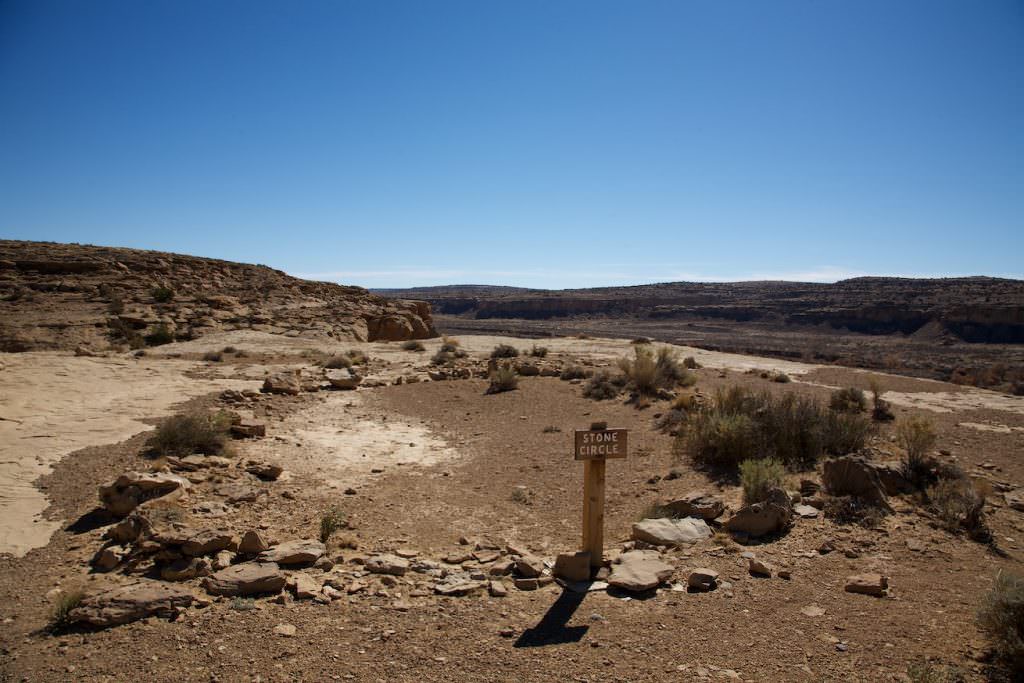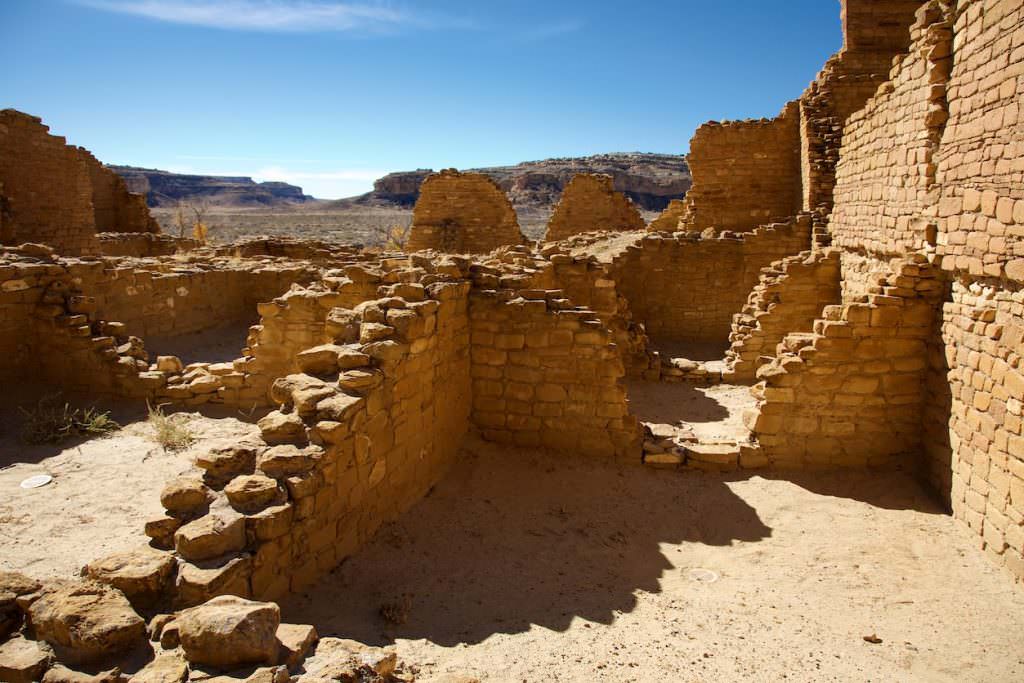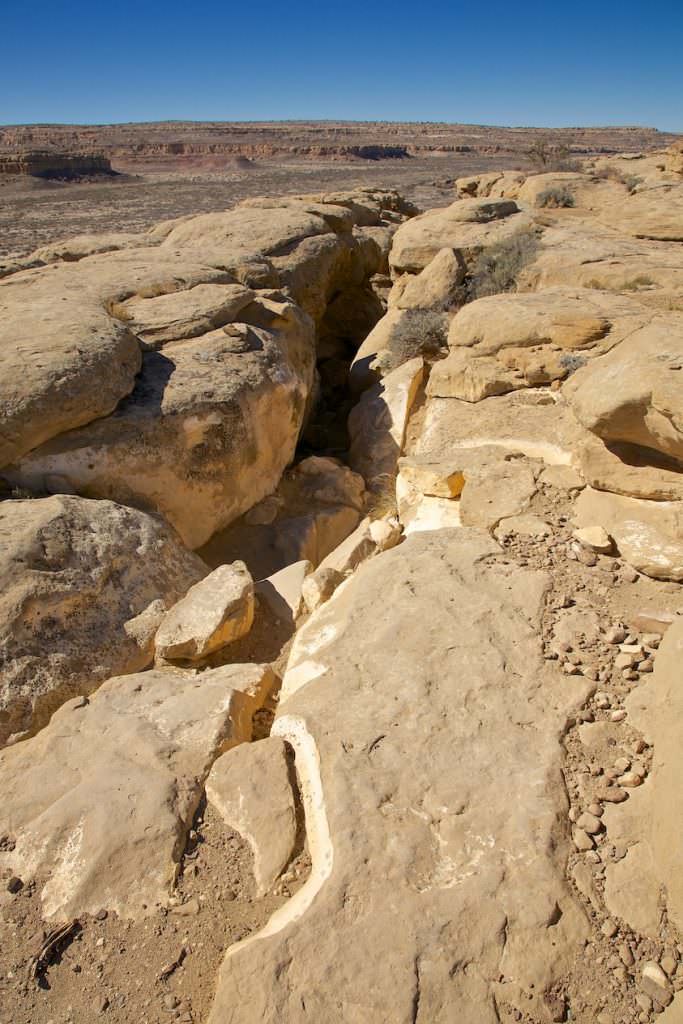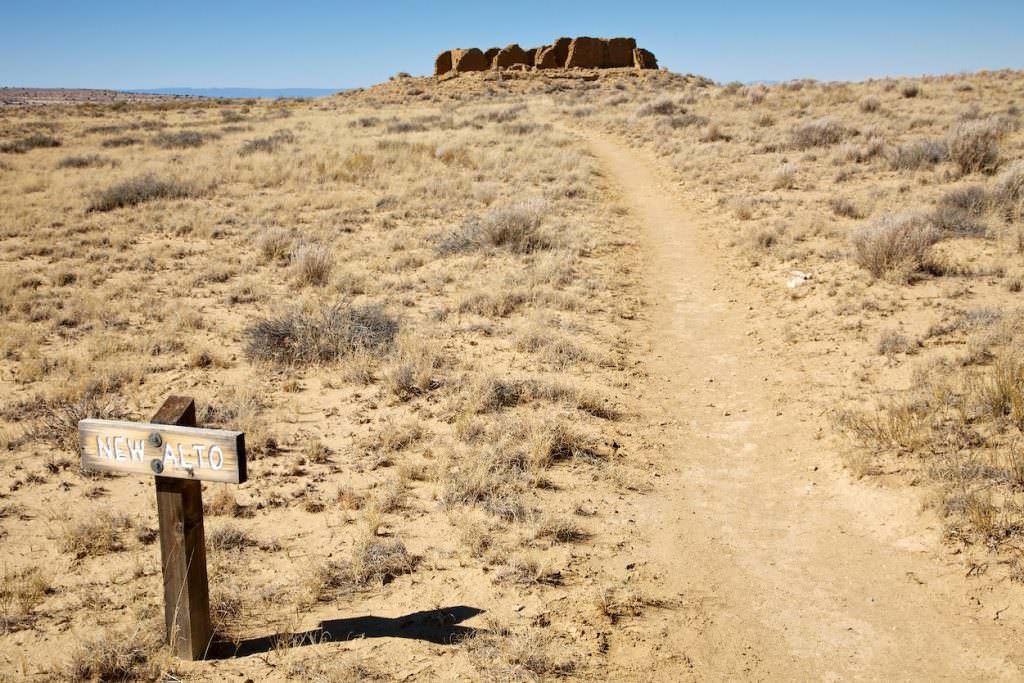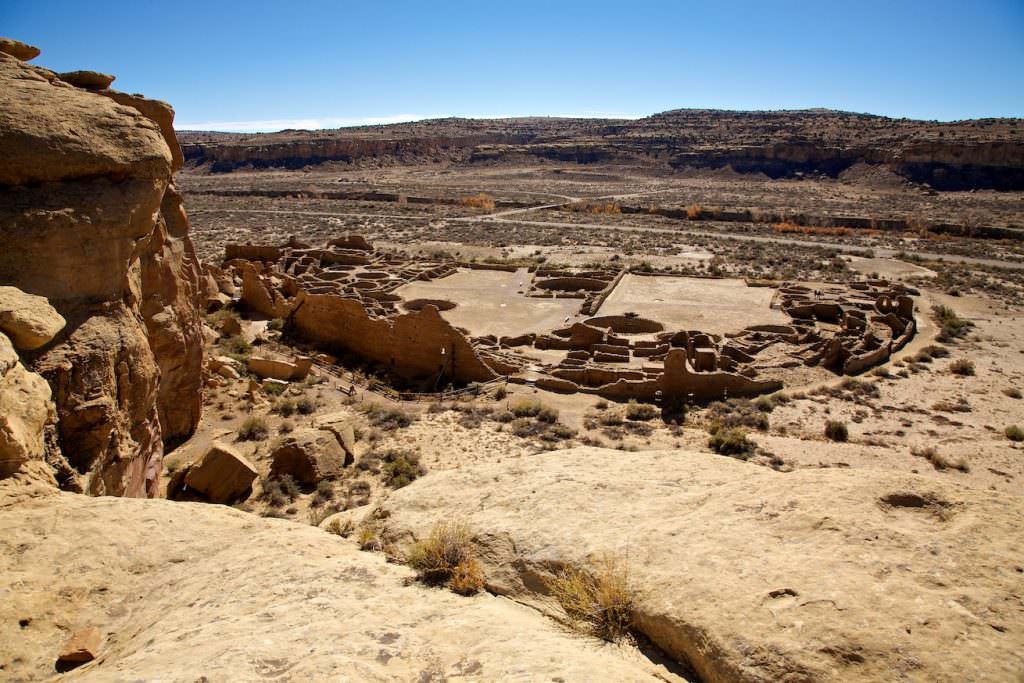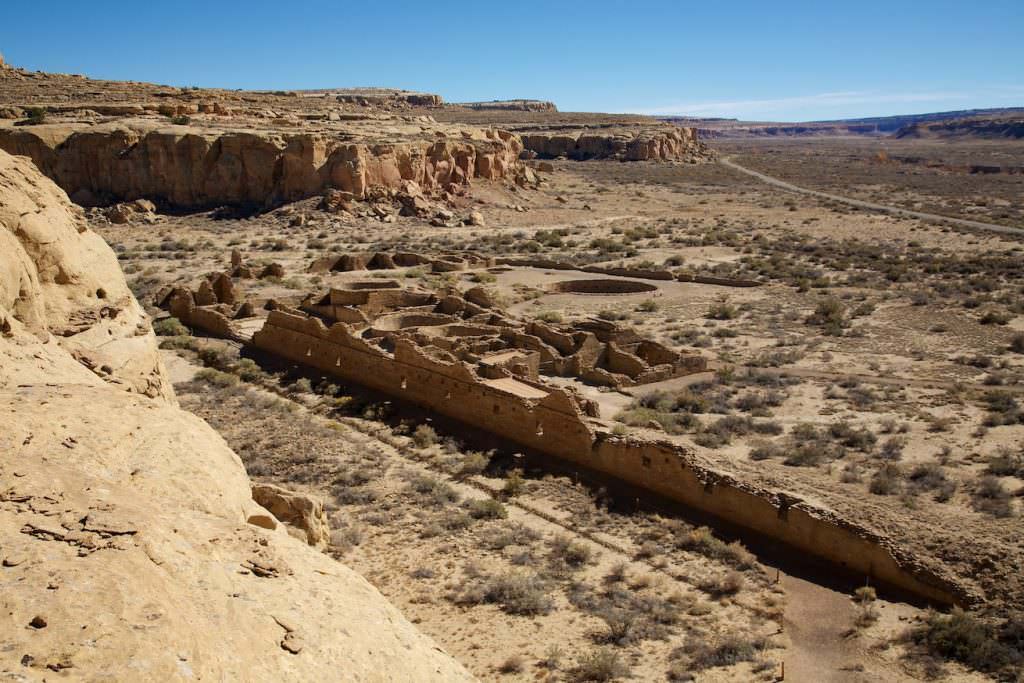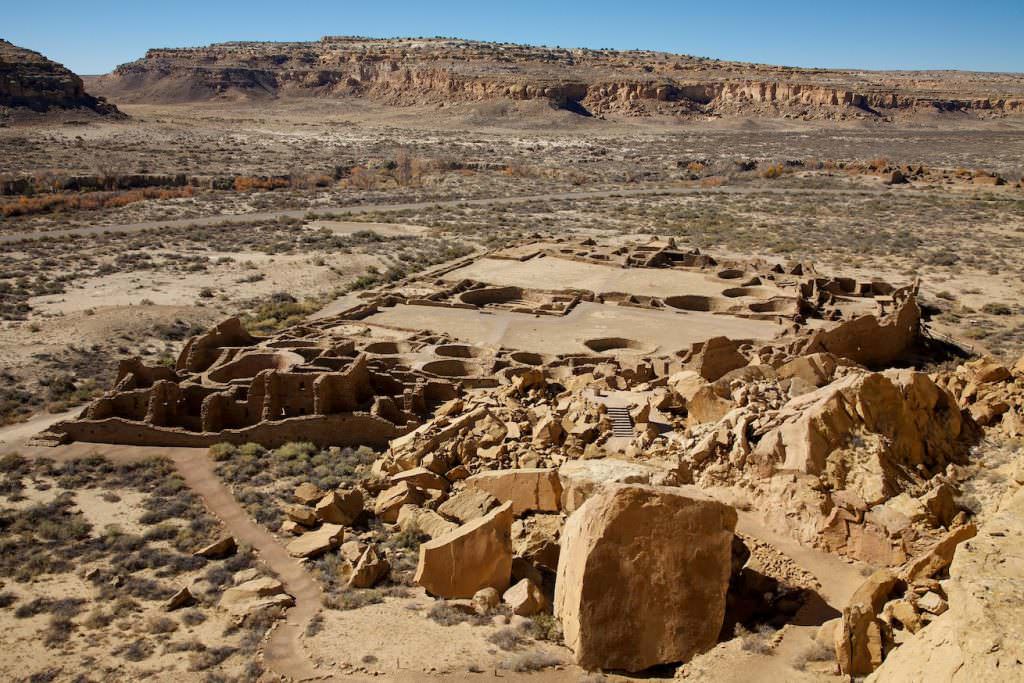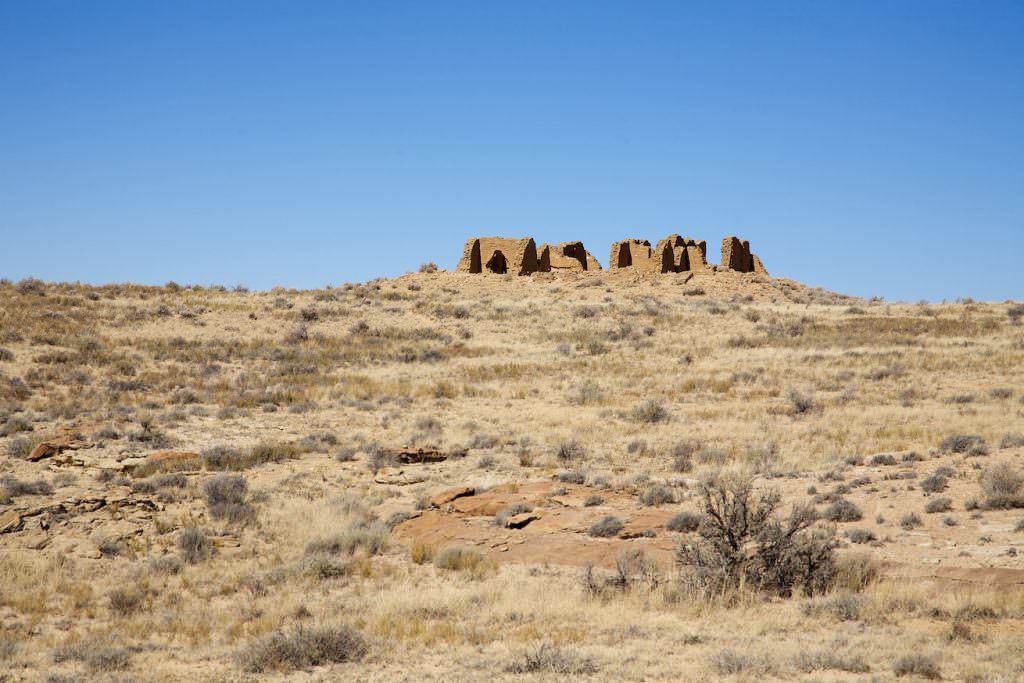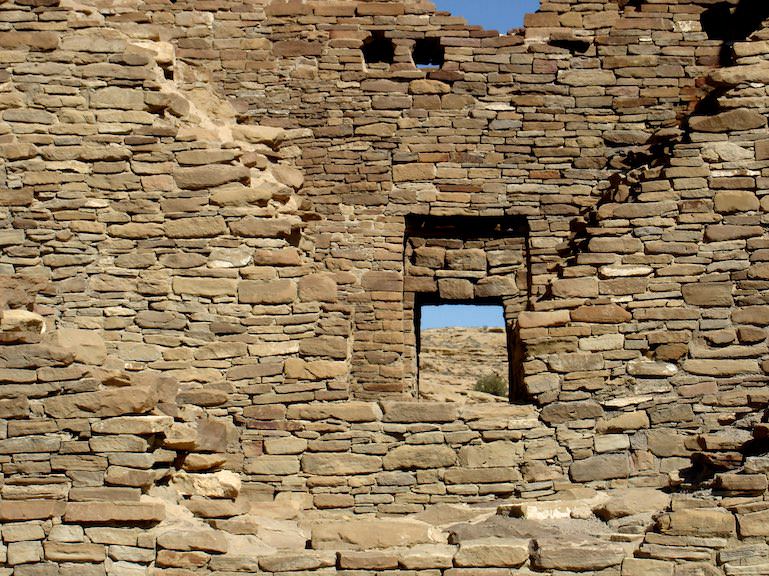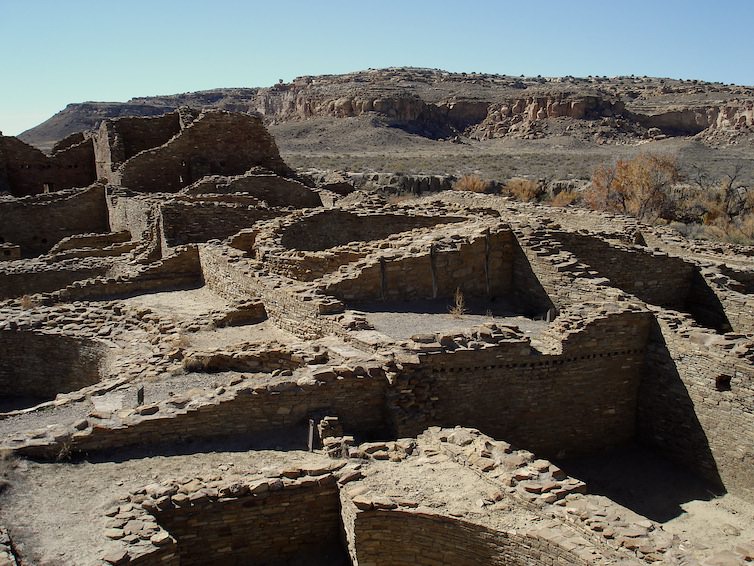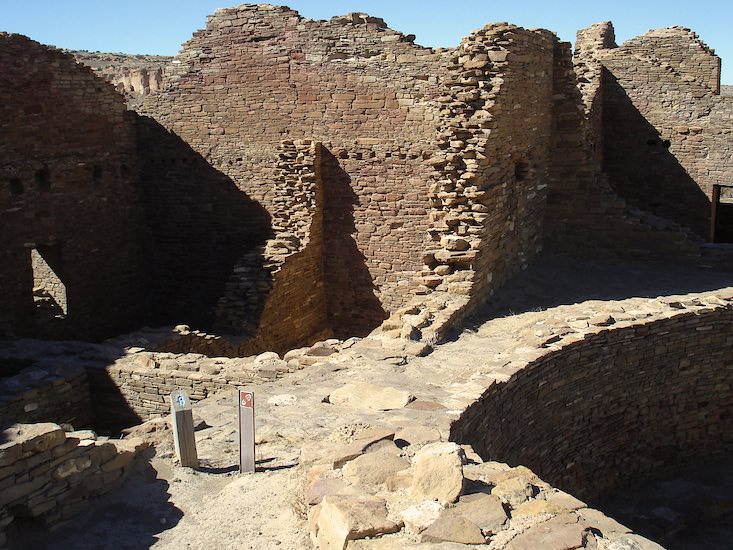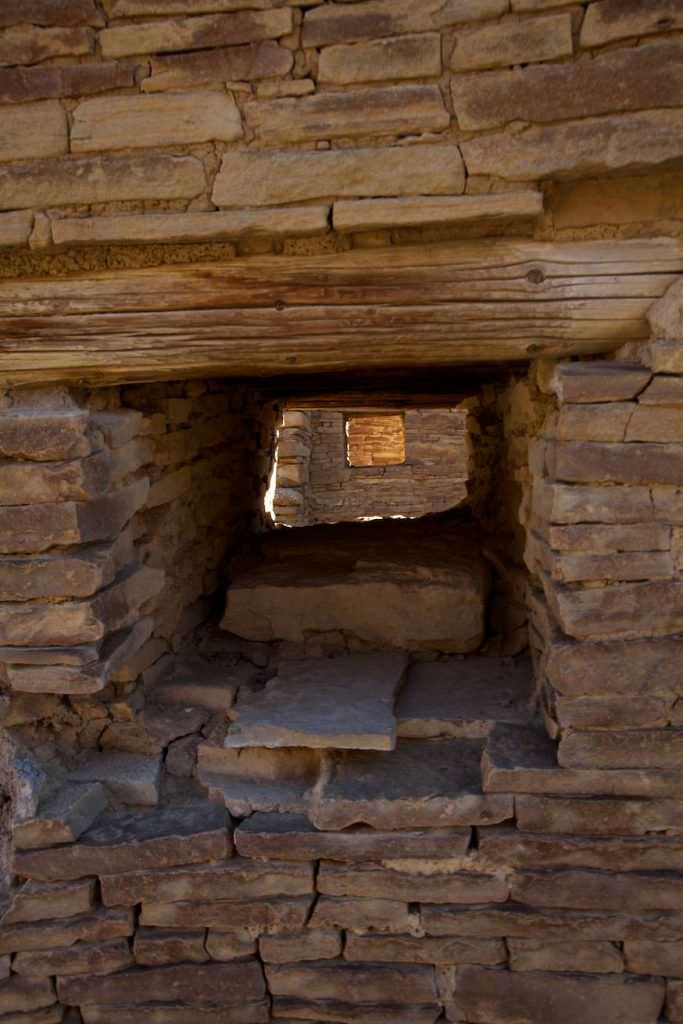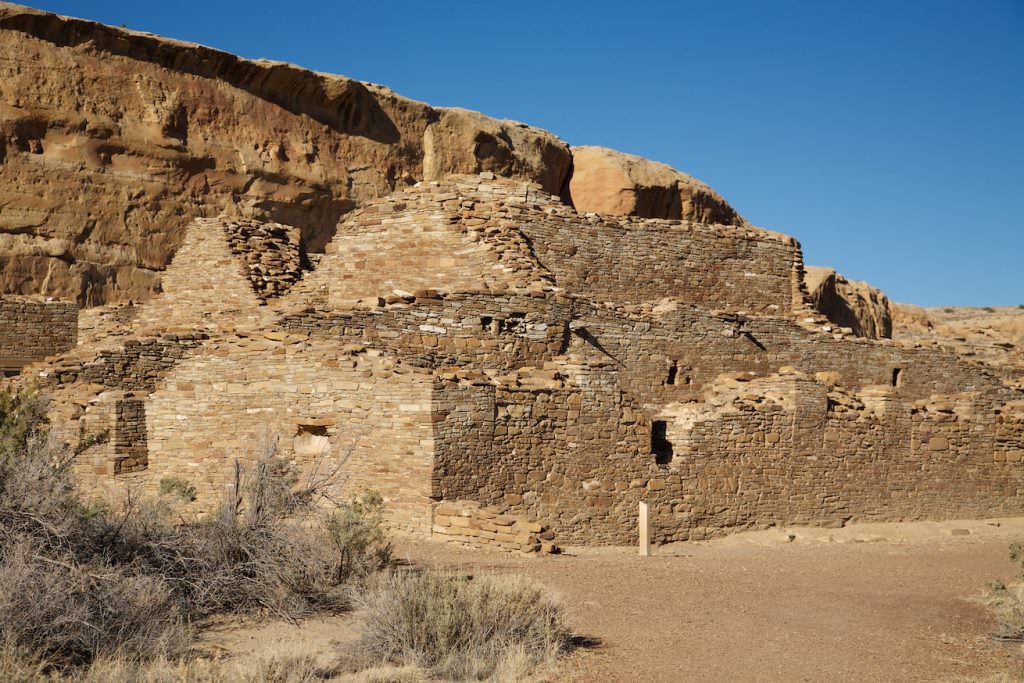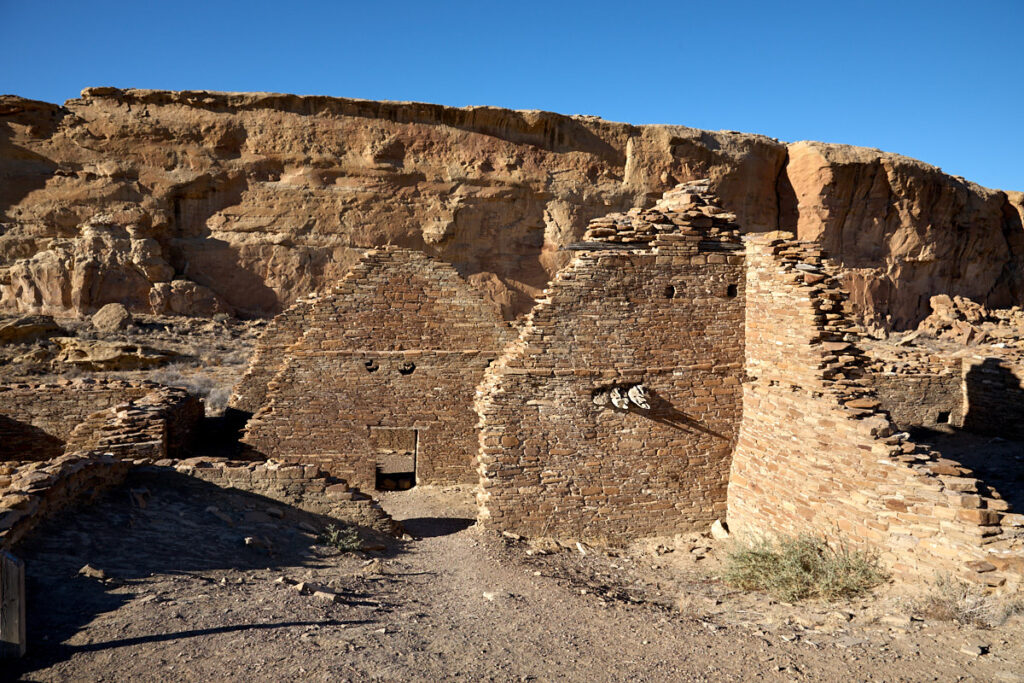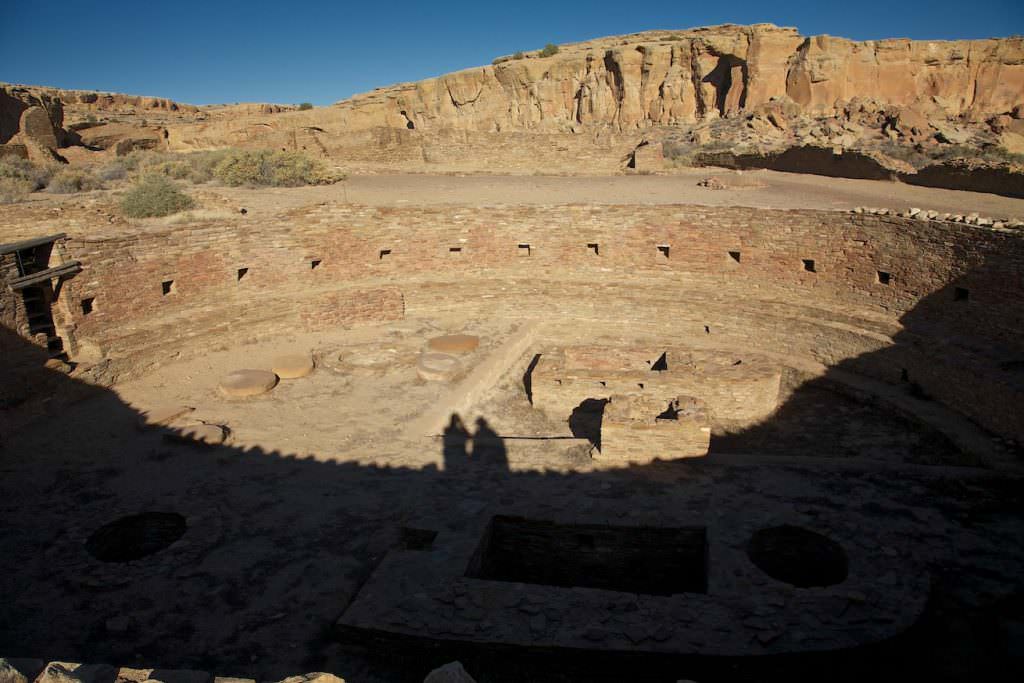General information about the National Park
The structures in Chaco Canyon are among the most important historic structures in America. They were built between 850 and 1250. The Chaco Canyon was the center of the Pueblo people. In 1987 the canyon was added to the UNESCO World Heritage List.
The exact functions of the buildings is not entirely clear; they could have served as ceremonial centers, but also as storage rooms for trade goods, or as administrative centers. In 1896, the first scientific research began by the American Museum of Nature History.
Note: On dirt roads, road conditions can change constantly. Therefore, we strongly recommend that everyone check the road conditions before each trip. We do not recommend driving on unpaved roads before, during or shortly after rain or snowfall.
Entrance fees and opening hours
- 25$/car valid for 7 days
- Covered by the Anual Pass*
- Open all year except Thanksgiving, Christmas and New Year.
*The Anual Pass is so to speak the "flat rate" for all Parks managed by the National Park Service. The pass costs a one-time fee of $80 and can be purchased at the entrance to each National Park, National Monument, etc. The pass is valid for 13 months.
Our visits: So far 1 visit in October 2012
Pueblo Bonito
Description: Pueblo Bonito is by far the largest building complex in the canyon. Built in a D-shape, it consisted of up to 800 rooms. Construction probably began around 920. Investigations showed that the rooms were not permanently inhabited and served more ceremonial purposes. In 1941, parts of the complex were destroyed by a huge rockfall.
Our rating: Twice a day you can take part in a ranger guided tour through the Pueblo Bonito. We were lucky and could get a place on such a tour. The tour was great and we learned a lot about the construction, the inhabitants and the way of life. We would advise everyone to take such a tour. We enjoyed it very much and were very impressed.
Kin Kletso und Pueblo Alto Trail
Description: Kin Kletso is a rather more unusual pueblo because there are no side wings as in the other pueblos in the canyon. The building complex is rectangular and consisted of 132 rooms and 4 kivas. Construction began around 1125
Above the Kin Kletso Pueblo is the ascent to Pueblo Alto Trail. This trail takes you to the top of the cliffs and gives you a great view of the huge pueblos from above. Here you have the option to hike a longer trail and view two more smaller pueblos.
Our rating: The view is great and definitely worth the climb. Those who are willing to climb the rocks will be rewarded with a breathtaking view. The two pueblos, which you can still look at the top, are then probably something for the real enthusiasts. We didn't find them nearly as spectacular as the big pueblos in the canyon.
Pueblo del Arroyo
Description: Pueblo del Arroyo is one of the large pueblos in the canyon. The complex consisted of 284 rooms spread over 4 floors. Again, it is believed that the rooms were not used permanently as living quarters, but rather served ceremonial purposes.
Our rating: Quite interesting. However, when you are not really into the subject, you simply don't get that much of such a site without a tour. Therefore, it was much more interesting to visit Pueblo Bonito with the guided tour.
Chetro Ketl
Description: Cheto Kerl is the second largest pueblo in the canyon. Construction began in 1010 and continued for over a century. Particularly impressive is the huge 13ft deep kiva at the central plaza of the pueblo.
Our rating: This pueblo was also very interesting and impressive to look at. We were especially fascinated by the size of the buildings. It is almost unbelievable what the people of this time created.
In general, we thought that Chaco Canyon was a very special place. It had a special vibe for us. We liked it very much, even though we are not really familiar with the details of the history of the Pueblo peoples.

